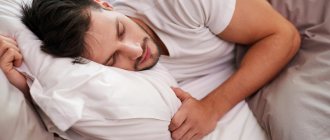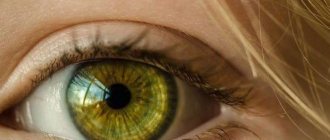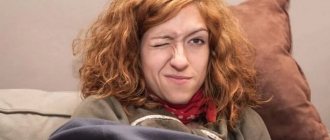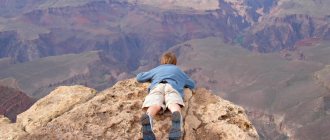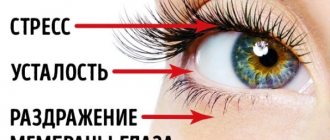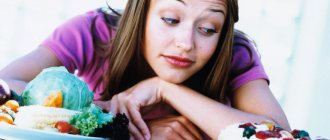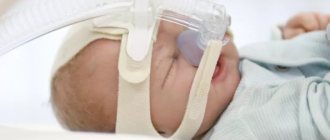The child spent his day actively, walked around, learned a lot of new things and fell asleep. What could be more physiological? But then something incomprehensible happens. The child twitches in his sleep and may wake himself up and cry.
What causes these involuntary movements? What is the cause of restless sleep and do all organs and systems fully rest during it?
Sleep from a physiological perspective
Many parents are sure that during sleep all the child’s vital functions are inhibited. His communication with the outside world is blocked, the senses do not bear any load, and the brain gains strength for subsequent mental work.
This position actually existed until a certain time. Today, many scientists are inclined to conclude that during sleep the activity of certain areas of the brain becomes higher than during wakefulness.
In other owls, the zones that govern a person’s daytime behavior (perception of the surrounding world, physical and mental activity, interaction with other people) “fade into the background” at night. The restoration of their strength occurs in sleep, which generally takes up a third of a person’s entire life.
However, those neurons whose activity increases are able to activate the child’s autonomic functions, provoke sudden movements and even feelings.
Restless legs syndrome is a neurological disorder first described in medical literature by Willis in 1672. More than 250 years later, in 1945, Carl Ekbom applied the term “restless legs” to this syndrome. He later wrote an article about “growing pains” and “restless legs” and made a distinction between the two: while the former are characteristic of childhood, restless legs syndrome can not only appear early, but also continue into adulthood.
Primary restless legs syndrome is considered an autosomal dominant disorder. Scientists found a gene associated with susceptibility to the syndrome on chromosome 12q for French-Canadian families, 14q for Italian families, and 9p for 2 for American families.
Restless legs syndrome is a sensorimotor disorder characterized by uncontrollable sensations in the legs accompanied by an overwhelming urge to move them.
The diagnosis is purely clinical. This creates certain problems in terms of definition in children.
Children with restless legs syndrome may have behavior problems including aggression, inattention, hyperactivity, and daytime sleepiness due to difficulty maintaining sleep. These symptoms may be caused by an underlying periodic limb movement disorder or other problems.
The consequences of restless legs syndrome in children can be severe and include school failure and problems with social development, leading to misdiagnosis of various mental illnesses, including attention deficit hyperactivity disorder (ADHD) and others.
Diagnosing restless legs syndrome in children
The main criteria for determining restless legs syndrome in adults are similar for children.
The 4 main diagnostic criteria for adults are:
- An urge to move the legs, which is usually accompanied or caused by discomfort in the legs;
- An urge to move or discomfort that begins or worsens during rest or rest (while sitting or lying down);
- An urge to move or discomfort that intensifies or occurs only in the evening or at night;
- An urge to move or discomfort that is relieved partially or completely by movement (walking or stretching) at least as long as the activity continues.
Children are diagnosed with restless legs syndrome if all four signs are present. If the child cannot describe symptoms consistent with leg discomfort, at least two of the following must be present:
- sleep disturbance not typical for this age;
- having a biological parent or sibling with restless legs syndrome;
- and/or a polysomnogram (PSG) documenting a periodic limb movement index of 5 or more movements per hour of sleep.
Prevalence of restless legs syndrome among children
The exact prevalence of the syndrome in children is unknown, although some data have been obtained in limited populations. For example, a study conducted at the Mayo Sleep Disorders Center found the prevalence of the disorder among children 18 years of age and younger to be 5.9%. 32 of 538 subjects met criteria for either definite or probable restless legs syndrome.
Other studies estimate that 38% to 45% of adults with the condition began experiencing symptoms before they were 20 years old.
Clinical characteristics of restless legs syndrome in children
Typically, the syndrome follows a circadian pattern, usually occurring in the evening or at night, rarely at other times of the day. Children may be especially restless in tight, restrictive situations, such as sitting in a classroom, movie theater, airplane, or car. Behavior can be assessed as restless and hyperactive.
The need to move is partially or completely relieved by movements or actions involving the lower extremities - walking, running, rubbing, stretching, etc. A conscious effort to stop motor movements can usually be achieved by the child only for a short period of time, similar to what happens in a person with motor tics.
Emotional social interactions can also prevent or alleviate warning signs.
Hot or cold sensations can help relieve symptoms, just as they relieve growing pains, muscle pain, and leg cramps. These overlapping clinical presentations can make differentiation between other common diagnoses difficult.
Often, a child may use the term “pain” to describe uncomfortable sensations. However, the more he complains about it, the less likely it is that it is restless leg syndrome.
Pain associated with the syndrome in children usually occurs from both knees down and affects the calves, although it can reach the thighs. The key sign when diagnosing “restless legs” is partial or complete relief from pain, according to the child, when moving.
Often children with restless legs syndrome complain of the inability to get enough sleep: sleep disturbance is the result of periodic movements of the limbs during sleep.
Other daytime symptoms in children with restless leg syndrome include lack of concentration, irritability, mood changes and restlessness.
The difference between restless legs syndrome in a child and other similar conditions
- For growing pains
Growing pain is defined by experts as “poorly expressed discomfort of the extremities, which does not meet the criteria for other diagnoses: arthritis, other pathologies of bones and joints, peripheral neuropathy, radiculopathy.”
Growing pains are often confused with restless leg syndrome. A similar characteristic of both is the circadian pattern of symptoms, which occur in the late afternoon before bedtime.
Growing pains differ from restless legs in that the discomfort is not partially or completely relieved by movements of the lower extremities. Children usually wake up in the middle of the night complaining of “throbbing” pain in their legs. Onset usually occurs in early or late childhood, and the pain is located in the front of the thighs, calves, or behind the knees.
Symptoms are relieved with massage, warm and ice compresses, acetaminophen or ibuprofen.
- From motor tics
Common simple tics involving one muscle group—blinking the eyes, twitching the face, neck or legs, grimacing, shaking the head, shrugging the shoulders—are involuntary, but can be temporarily suppressed by efforts on the part of the child. This usually results in a cluster of tics, resulting in great relief.
Typically, diagnosis is made at age 7 years. Tics are more common in boys. It is thought to be an inherited neurological disorder that usually resolves by adulthood, although it can sometimes persist.
- For attention deficit hyperactivity disorder
The exact relationship between ADHD, restless legs syndrome, and periodic limb movement disorder is unknown. Additionally, there is overlap between symptoms and treatment.
All of these disorders may be accompanied by irritability, mood changes, hyperactivity, inattention and restlessness.
It has been demonstrated that restless legs syndrome and periodic movement disorder are frequently observed in children diagnosed with ADHD.
- For seizures
Unlike restless leg syndrome, leg cramps are very painful, usually affect one limb, and are limited to a specific muscle group. Symptoms are not relieved by movement, but resolve with rest and alternating use of ice packs and warm compresses.
Nighttime leg cramps are also common among children. Their frequency increases by 12 years of age and reaches a peak by the age of 16-18 years.
- For Osgood-Schlatter disease
The disorder manifests itself as pain in the knee, which worsens after strenuous activities that require excessive movement of this part of the body. The disease usually occurs between the ages of 10 and 14 years. The cause is believed to be abnormal tension in the patellar tendon, which causes pain where it attaches to the kneecap.
The condition can be alleviated by applying ice packs, alternating with warm compresses, taking paracetamol and ibuprofen.
- From chondromalacia patella
The condition is also known as patellofemoral pain, idiopathic anterior knee pain, or patellofemoral slip syndrome. This is a diagnosis of exclusion and usually results from malalignment of the patella of the femoral joint, resulting in damage to the underside of the patella. The most painful sensations occur when the knee is fully bent.
Unlike restless legs syndrome, chondromalacia patella causes pain in the knee joint and is aggravated by movement.
Treatment includes nonsteroidal anti-inflammatory drugs, ice or heat massage, avoidance of activities that cause pain such as leg squats or cycling, and podiatrist-prescribed rehabilitation techniques such as straight leg raises or orthotics.
- For arthralgia
Arthralgias are medical disorders associated with joint pain. Unlike restless legs syndrome, swelling and tenderness may be present in the affected joint(s), and the pain may be more severe.
Systemic muscle and nerve involvement may occur and, depending on the medical disorder, may mimic some of the complaints seen with restless legs syndrome.
- From akathisia
This condition is manifested by a feeling of inner restlessness, accompanied by an urge to move. Unlike restless legs syndrome, akathisia is usually a side effect of antipsychotic medications and can occur at any time of the day.
Treatment consists of discontinuing or reducing the dose of the pathogen.
Etiology of restless legs syndrome in children
Central dopaminergic systems have been implicated to some extent in the pathogenesis of restless legs syndrome, based on the fact that dopaminergic medications improve symptoms of the disorder. The primary syndrome is thought to be inherited, and evidence suggests that it may be an autosomal dominant disorder.
The most common cause of secondary syndrome in children appears to be iron deficiency. The vitamin is an integral part of dopamine biosynthesis; it is required for tyrosine hydroxylation, which is the rate-limiting step for dopamine production.
It was found that serum ferritin levels were lower in children with restless legs syndrome than in healthy peers.
33% of children with restless legs syndrome had serum ferritin below the 5th percentile, 75% below the median (23 μg/L in men and 17 μg/L in women), and 83% below 50 μg/L.
Research has not yet determined whether iron deficiency is due to diet or genetic predisposition, but a combination of both may be the most likely explanation.
Other causes of secondary restless legs syndrome include peripheral neuropathy and uremia. Taking medications (antidepressants, sedating antihistamines, dopamine receptor antagonists) may worsen or accelerate cases of the disease.
Treatment of restless legs syndrome in children
Many sleep physicians have differing opinions regarding the treatment of restless legs syndrome, primarily because there have been no randomized placebo-controlled trials.
Thus, the Standards of Practice Committee of the American Academy of Sleep Medicine states that no specific recommendations can be made regarding the treatment of children with the syndrome and periodic limb movement disorder.
There are currently no drugs approved by the US Food and Drug Administration for the treatment of the syndrome in children, unlike ropinirole for the treatment of moderate to severe primary disease in adults.
The best initial form of treatment is to reduce factors or conditions that may worsen the development of the syndrome. Iron deficiency should also be considered. Measurement of serum ferritin is recommended but should not be tested in sick children; it may be falsely elevated.
Iron supplements should be taken with caution; some pediatricians may recommend multivitamins containing iron rather than ferrous sulfate.
It may take weeks or months of iron treatment to show improvement in symptoms.
Children with restless legs syndrome are advised to maintain a regular sleep-wake schedule and avoid heavy foods, liquids, or exercise several hours before bedtime.
conclusions
Identifying and treating restless legs syndrome in children is often challenging. Making a diagnosis is difficult due to the inability of young children to describe their sensations in detail. Additionally, many conditions and disorders can mimic restless legs syndrome.
However, if left untreated, the disease can lead to serious behavioral consequences, including impaired daytime functioning, poor school performance, and problems with social interaction.
References
- Odin P, Mrowka M, Shing M. Restless legs syndrome. Eur J Neurol. 2002;9(suppl 3):59–67.
- Ekbom KA. Restless legs: a clinical study. Acta Med Scand. 1945;158(suppl):1–122.
- Brenning R. Growing pains. Acta Soc Med Ups. 1960;65:185–201.
- Rajaram S, Walters AS, England S, Mehta D, Nizam F. Some children with growing pains may actually have restless legs syndrome. Sleep. 2004;27:767–773.
- Ekbom KA. Growing pains and restless legs. Acta Pediatr Scand. 1975;64:264–266.
- Desautels A, Turecki G, Montplaisir J, et al. Restless legs syndrome: confirmation of linkage to chromosome 12q, genetic heterogeneity, and evidence of complexity. Arch Neurol. 2005;62:591–596.
- Diagnostic and Coding Manual. 2nd ed. Westchester, Ill: American Academy of Sleep Medicine; 2005. International Classification of Sleep Disorders.
- Chervin RD, Dillon JE, Archibold KH, Ruzicka DL. Conduct problems and symptoms of sleep disorders in children. J Am Acad Child Adolesc Psychiatry. 2003;42:201–208.
- Allen RP, Picchietti D, Hening WA, Trenkwalder C, Walters AS, Montplaisir J. Restless legs syndrome: diagnostic criteria, special considerations, and epidemiology. A report from the restless legs syndrome diagnosis and epidemiology workshop at the National Institutes of Health. Sleep Med. 2003;4:101–119.
- Kotagal S, Silber MH. Childhood-onset restless legs syndrome. Ann Neurol. 2004;56:803–807.
- Buchfuhrer MJ, Hening WA, Kushida C. American Academy of Neurology: Restless Legs Syndrome. New York, NY: Demos Medical Publishing, LLC.; 2006. RLS in Children. in press.
- Montplaisir J, Boucher S, Poirier G, Lavigne G, Lapierre O. Lesperance P: Clinical, polysomnographic, and genetic characteristics of restless legs syndrome: a study of 133 patients diagnosed with new standard criteria. Mov Disord. 1997;12:61–65.
- Walters AS, Hickey K, Maltzman J, et al. A study questionnaire of 138 patients with restless legs syndrome: the “night walkers” survey. Neurology. 1996;46:92–95.
- Chervin RD, Archibold KH, Dillon JE, et al. Associations between symptoms of inattention, hyperactivity, restless legs, and periodic leg movements. Sleep. 2002;25:213–218.
- Picchietti DL, England SJ, Walters AS, Willis K, Verrico T. Periodic limb movement disorder and restless legs syndrome in children with attention-deficit-hyperactivity disorder. J Child Neurol. 1998;13:588–594.
- Guilleminault C, Korobkin R, Winkle R. A review of 50 children with obstructive sleep apnea syndrome. Lung. 1981;159:275–287.
- Leung AK, Wong BE, Chan PY, Cho HY. Nocturnal leg cramps in children: incidence and clinical characteristics. J Natl Med Assoc. 1999;91:329–332.
- Bosch JJ. Chondromalacia patella. J Pediatr Health Care. 1999;13:155–156.
- Sun ER, Chen CA, Ho G, Earley CJ, Allen RP. Iron and the restless legs syndrome. Sleep. 1998;21:371–377.
- Chesson AL, Jr, Wise M, Davila D, et al. Practice parameters for the treatment of restless legs syndrome and periodic limb movement disorder. An American Academy of Sleep Medicine Report. Standards of Practice Committee of the American Academy of Sleep Medicine. Sleep. 1999;22:961–968.
- Littner MR, Kushida C, Anderson WM, et al. Practice parameters for the dopaminergic treatment of restless legs syndrome and periodic limb movement disorder. Sleep. 2004;27:557–559.
- Walters AS, Mendelbaum DE, Lewin DS, Kugler S, England SJ, Miller M, and the Dopaminergic Study Group Dopaminergic therapy in children with restless legs/periodic limb movements in sleep and ADHD. Pediatric Neurol. 2000;22:182–186.
- Konofal E, Arnulf I, Lecendreux M, Mouren MC. Ropinirole in a child with attention-deficit hyperactivity disorder and restless legs syndrome. Pediatric Neurol. 2005;32:350–351.
How does it manifest itself?
An objective characteristic of sleep is the absence of consciousness and reactions to the world around us. Reduced reflexes give rest to the nervous system.
Sleep does not come to the baby right away. Moving to it from a state of wakefulness, the body goes through several phases (equalizing, paradoxical, ultraparadoxical and narcotic).
Their duration depends on the individual characteristics of the body.
Each of these stages can be accompanied by involuntary motor activity of the baby, especially the initial ones, when the body has not yet completely switched to sleep.
This period when the child shudders when falling asleep is especially typical for infants, who, after emerging from the mother’s womb, are just getting acquainted with the rhythms of their current life.
This is why it is so difficult to put a baby cradled in your arms into bed without waking him up. This is especially true if the stage of falling asleep has not yet ended.
Troubleshooting
The physiological manifestation, when a child twitches when falling asleep, does not need to be treated. Pediatrician Komarovsky shares this opinion. Mom and dad can help the baby themselves by eliminating irritating causes and organizing the baby’s correct daily routine. A one-year-old child very rarely exhibits such symptoms.
The presence of accompanying symptoms, frequent attacks that occur several times in a row, require mandatory medical correction and examination. This is necessary for timely diagnosis and treatment of possible pathological conditions.
Independent actions of parents
If the baby does not flinch often, the doctor has not identified any pathologies, loved ones can help him cope with the syndrome on his own. These measures will make the child’s cramps when falling asleep less frequent, and then they will be able to eliminate them altogether. You need to do the following:
- establish a daily routine;
- ventilate the room;
- carry out wet cleaning;
- make the temperature comfortable;
- swaddling a baby;
- ensure silence.
The child must adhere to the daily routine. He needs to eat, walk, go to bed, and wake up at certain hours. In the morning you need to open the curtains and close them during the day and night rest. This way, the baby will quickly understand that in the dark they should prepare to fall asleep.
Mental, physical, and emotional stress must be sufficient and age-appropriate. Closer to bedtime, games should be kept calm so that the little person gets ready to doze off. The room must be ventilated, if possible, ensure a constant flow of fresh air. Wet cleaning will get rid of dust, which can irritate the upper respiratory tract. The temperature should be 19-20 degrees.
Advice! Newborn babies, who until recently were in a rather cramped mother’s tummy, may lose orientation in a large space and experience a feeling of insecurity. In such cases, swaddling helps.
The crib is placed away from heating appliances and windows. Normal household noise should not disturb the baby, and the whole family should not be forced to walk on tiptoe. But this does not mean that you need to turn on a hairdryer or vacuum cleaner while your baby is sleeping.
Medical assistance
If a child shudders when falling asleep and during sleep several times in a row, twitching, convulsions seem to roll in a wave, coming quickly one after another, infantile epilepsy can be suspected. You should immediately seek help from a pediatrician or neurologist.
Sweating of the head, baldness of the back of the head, accompanying muscle twitching are signs of incipient rickets. The doctor will examine the baby, make a diagnosis and prescribe the necessary treatment. Trembling of the limbs, twitching of the legs, arms, and arching may be a consequence of birth trauma or increased intracranial pressure.
Attention! When the baby begins to shudder, convulse, the head may shake nervously, the chin may tremble, you should immediately consult a doctor. Such symptoms occur with a brain tumor.
About deep and shallow sleep
The ensuing sleep is also heterogeneous. It contains deep and superficial phases. If in an adult the deep one predominates over the superficial, then in a child it is the other way around. The time spent on deep sleep is several times less than on shallow sleep. That is why, in those moments when the baby is sleeping shallowly, he can “respond” with twitches to loud sounds, jolts of the crib, changes in the position of his body, high or low temperature in the room, and other irritating factors.
This is manifested by throwing away the arms and legs, general twitching, tossing and turning, and the utterance of individual words or sounds.
Scientists have proven that during shallow sleep, emotions experienced the day before can be “scrolled” in the brain. Then children dream. And the peace of sleep depends on their emotional coloring.
By playing very active and active games before rest, overloading the brain with vivid experiences, parents “program” their child for restless sleep.
A newborn twitches in his sleep for reasons completely different from those that cause twitching in adults. In babies, this happens due to their feelings from getting to know a new world for them, an incomprehensible lying position, or an elementary feeling of hunger (in the womb they were not used to eating for hours).
Treatment of Tourette's syndrome in Russia, Saratov
Sarklinik provides comprehensive treatment for Tourette syndrome in Russia, Saratov. 12 basic and 20 additional techniques are used, which in most cases allow you to get rid of vocal and motor tics, involuntary tic-like movements, grunting, shouting, twitching of the face, neck, arms and legs, and torso.
Sign up for a consultation. There are contraindications. Specialist consultation is required.
Information about treatment at the Sarclinic: Treatment of Tourette's syndrome Treatment of nervous tics How to get rid of echolalia How to cure vocal tics? Reviews about the treatment of children Questions from parents about Gilles de la Tourette syndrome: , , , , , , , .
Text: ® SARCLINIC | Sarclinic.com \ Sarсlinic.ru Photo: © Zametalov / Photobank Photogenica / photogenica.ru The people depicted in the photo are models, do not suffer from the diseases described and/or all coincidences are excluded.
Related posts:
Calomasania in children: causes, treatment in Saratov, how to treat calomasania in Russia
Fecal incontinence: treatment in Saratov, how to cure fecal incontinence in children in Russia
Neurosonography of the brain of newborns: norms, interpretation, center, where to do it
National calendar of preventive vaccinations for children in Russia
Children's rehabilitation in Saratov
Comments ()
What else could be causing the twitching?
The baby's body is a single whole. Problems in the functioning of one or more organs can manifest themselves in the quality of sleep and calm behavior during it.
Thus, colic, a frequent companion of babies switching from one type of feeding to another, can torment a child so much that he feels pain from it even in his sleep and his legs begin to twitch. To reduce them, he tries to take a forced position of the body, turn so that the pain goes away. It’s not easy to do this in a dream, so these movements look like simple twitches.
Another unpleasant companion for young children is pain from teething. In addition, abundant saliva may flow into the nasopharynx, making it difficult to breathe. The sleeping child reacts to this with sudden movements, as if he is nervous.
Viral infections can cause restless sleep. Sore throat, runny nose (similar to allergic rhinitis), cough - these symptoms interfere with normal breathing and can also cause restlessness during sleep.
Why does a child flinch in his sleep and what to do about it?
We have already said more than once that children’s sleep differs from that of adults, but their general mechanism is similar. Just as we restlessly toss and turn in bed after a tiring and difficult day, so a child shudders in his sleep, worrying about what happened during the day. This reaction to overexcitation is especially characteristic of children with choleric temperament. Sometimes it even seems that the baby not only shudders, but almost runs somewhere! To help your child calm down, use music therapy, for example, lullabies performed by Natalia Faustova.
Twitching of the chin and arms (tremor) is explained by the general immaturity of the muscular and nervous systems. This condition is more common in premature babies or in difficult labor cases. A newborn starts in his sleep, accidentally hits himself with his hands and wakes up crying. To cope with tremors, use soft swaddling or special sleep envelopes.
An older child may flinch in response to a dream or vivid memory. At the same time, not only his arms or legs tremble, but even his closed eyelids.
Renowned psychologist and popularizer of attachment theory, Gordon Neufeld, believes that attachment disorders can also cause shaking in sleep, especially in children over 2 years old. In this case, you need to work not with the child himself, but with the general microclimate of the family.
In what case is this dangerous?
If a newborn twitches frequently and violently in his sleep, the question “why?” The pediatrician should answer. Myoclonus that occurs for no reason can be the result of serious brain disorders or hypoxia of the tissues of the brain centers.
Such diagnoses are made by an epileptologist based on basic and additional examinations, laboratory tests and monitoring of vital signs.
A cramp that cramps the body or part of it can be caused by neurological disorders, hereditary diseases, or genetic pathology.
How to help achieve restful sleep
If parents notice that the child is twitching in his sleep, they should figure out as much as possible under the influence of what factor these movements appear. Among the most common causes that are easy to eliminate are the following:
- a newborn twitches in his sleep if his sleeping conditions leave much to be desired. An example could be a high temperature in the room, a low percentage of humidity, a blanket that is too warm or, on the contrary, unseasonably light. Perhaps an uncomfortable mattress or pillow creates an unphysiological position for the head;
- too noisy around;
- the child did not spend enough time in the fresh air during the day, walks were short-lived or did not happen at all;
- active games took place immediately before bedtime, which led the nervous system to a state of hyperexcitation;
- the daily diet did not meet the baby’s needs in terms of quality or quantity of food eaten;
- living conditions have changed significantly (moving, flying, climate change, buying a new crib for him and other facts);
- sleepwear restricts movement and prevents you from taking a free position;
- diseases mentioned above.
When to sound the alarm
You should run to the doctor with complaints of shuddering in your sleep if:
- The baby always falls asleep restlessly, during the day he also behaves hysterically, often burps, his chin and head tremble when lying on his stomach after 3 months. These are signs of neurological diseases.
- The child twitches not only at the moment of transition to the deep phase of sleep, but also at night. The number of flinches is more than 10.
- Night “cramps” are accompanied by increased sweating, daytime weakness, and drowsiness. This is a sign of calcium deficiency in the body.
- After shuddering, the baby continues to tremble in one part of the body: leg, arm, head.
If twitching occurs in series, through short pauses and regularly, this is a sign of epilepsy.
The baby should be examined by a pediatrician and neurologist. If doctors suspect congenital or acquired pathologies of the central nervous system, parents and the child will be referred for further hardware and laboratory examination. You will need to donate blood for general indicators, hormones, and biochemical composition. To exclude or confirm epilepsy, EEG and REC are prescribed.
On a note! From a psychosomatic point of view, jerks at the moment of falling asleep are a consequence of daytime worries. The child cried that his mother had gone away for a long time on business, left him with an unloved nanny, and so on. Experts advise surrounding the baby with care and attention before going to bed, that is, restoring trust in the world and giving a feeling of complete security.
